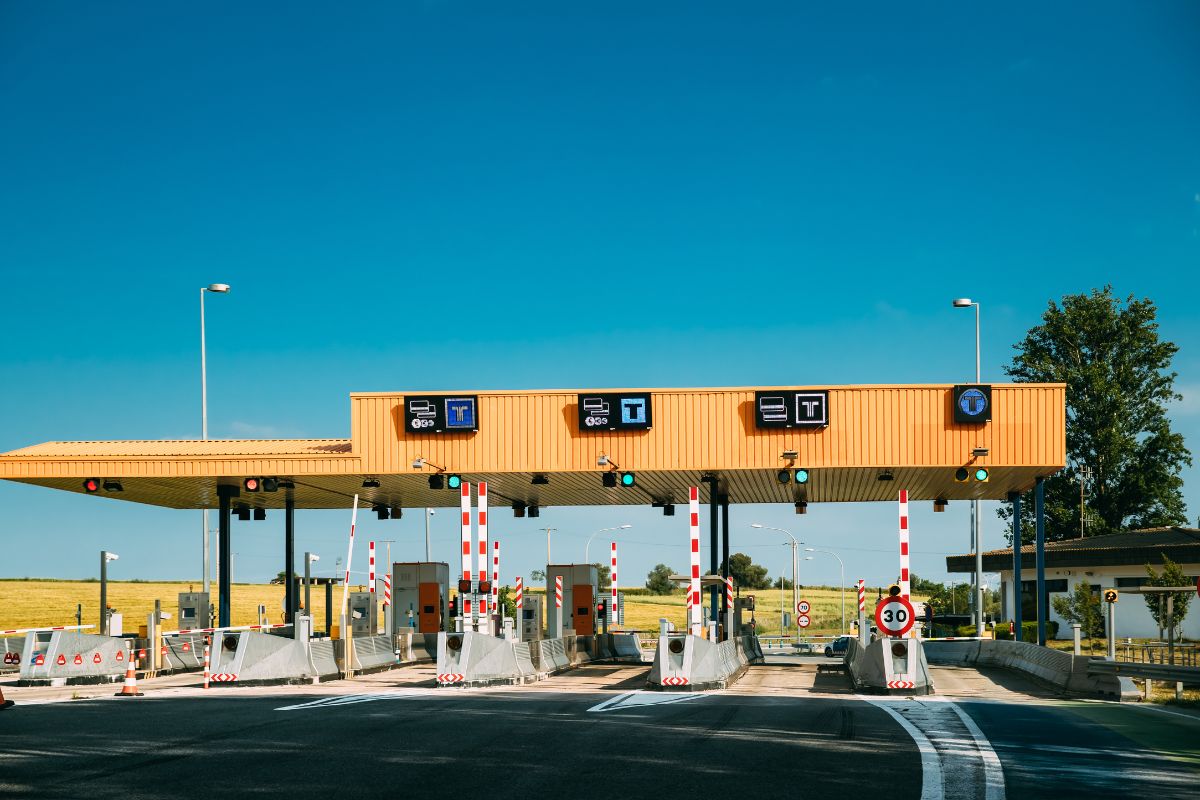
The transportation industry is evolving alongside technology as it continues to advance at an unprecedented rate. With the rise of electric vehicles, autonomous cars, and smart highways, the roads of tomorrow are to be vastly different from those of today. In this new era of transportation, toll management systems are playing an increasingly important role in ensuring smooth and efficient journeys for drivers. These systems not only aid in traffic flow management and congestion reduction, but they also provide valuable data insights that help to improve road safety and transportation network optimisation.
In this article, we’ll take a closer look at the role of toll management systems in modern transportation and explore how they are helping to shape the future of our roads. So buckle up and get ready to navigate the roads of tomorrow with confidence!
The Importance of Toll Management Systems in Modern Transportation
Toll management systems are an essential component of modern transportation infrastructure.
These systems, utilizing advanced technologies, collect tolls from drivers, manage traffic flow, and offer valuable insights that can enhance road safety and optimize transportation networks.
Toll management systems are essential in urban areas, where traffic congestion poses a major issue. In addition to reducing traffic congestion and improving air quality, toll management systems reduce car traffic by collecting tolls. A toll management system can also reduce accidents by ensuring that vehicles travel at safe speeds and are not overloaded. Overall, toll management systems are a critical component of modern transportation infrastructure.
The Evolution of Toll Management Systems
The history of toll collection dates back to ancient times when travellers had to pay a fee to cross bridges and use roads. Over time, toll collection methods have evolved, and today’s toll management systems use advanced technologies to collect tolls from drivers.
In the early days of toll collection, tolls were collected manually by toll collectors. Drivers would stop at toll booths, hand over their toll fee, and then continue their journey. This process was time-consuming and often led to traffic congestion.
Today, toll management systems use a variety of technologies to collect tolls automatically. One of the most common methods is electronic toll collection (ETC). Transponders, which are small devices placed on the windshield of a vehicle, are used by ETC systems. These devices establish communication with toll collection equipment, enabling the automatic collection of tolls without requiring drivers to stop or reduce their speed.
Other toll collection methods include video tolling, where cameras capture images of license plates, and tolls are collected via mail, and distance-based tolling, where tolls are on the distance travelled by a vehicle.
Toll Collection Methods and Technologies
1. Toll Booths: This traditional method involves setting up toll booths where drivers stop and pay the toll in cash or electronically using toll cards or transponders.
2. Electronic Toll Collection (ETC): ETC systems utilize transponders or electronic tags installed in vehicles. These devices communicate with toll collection equipment, allowing tolls to be automatically deducted from a pre-paid account or billed to the vehicle owner. FASTag is an electronic toll collection system implemented globally. Vehicle owners affix a sticker-like device to the windshield of their vehicles. FASTag uses Radio Frequency Identification (RFID) technology to facilitate contactless toll payment. When a vehicle equipped with a FASTag passes through a toll plaza that has FASTag readers, it
automatically deducts the toll amount from the linked prepaid or savings account of the vehicle owner.
3. Video Tolling: Video tolling uses cameras to capture images of license plates as vehicles pass through toll points. Upon capturing the license plate information, toll collection systems actively identify the vehicle owner and proceed to collect tolls through mail or electronic payment methods.
4. Distance-based Tolling: In this method, tolls are calculated based on the distance travelled by a vehicle. Technologies like GPS or vehicle tracking systems actively determine the distance covered, enabling tolls to be charged accordingly.
5. All-Electronic Tolling (AET): AET systems eliminate the need for toll booths and allow for seamless toll collection. Vehicles equipped with transponders or license plate recognition systems can pass through toll points without stopping, and tolls are automatically deducted from the associated account.
The Benefits of Toll Management Systems for Governments and Transportation Authorities
Toll management systems provide a wide range of benefits for governments and transportation authorities. One of the most significant benefits is revenue generation. Toll fees can help to fund transportation infrastructure projects, such as road repairs and new highway construction. Additionally, tolls can reduce the need for taxes to fund transportation projects, which can be a significant burden on taxpayers.
In addition to traffic management, toll management systems provide various benefits. By collecting tolls, these systems can effectively decrease the number of cars on the road, leading to reduced traffic congestion and improved air quality. Moreover, they play a crucial role in accident reduction by ensuring that vehicles maintain safe speeds and avoid overloading.
Toll Management Systems and Traffic Flow
Toll management systems can also help to improve traffic flow by providing real-time data insights. For example, toll management systems can track the number of cars on the road, the speed at which they are travelling, and the time it takes for them to reach their destination. By utilizing this data, we can actively optimize transportation networks and improve traffic flow. Overall, toll management systems are an essential tool for managing traffic flow and reducing congestion. By providing valuable data insights, toll management systems actively contribute to optimizing transportation networks and improving the overall driving experience.
Toll Management Systems and Revenue Generation
Another significant benefit of toll management systems is revenue generation. Toll fees can help to fund transportation infrastructure projects, such as road repairs and new highway construction. Furthermore, tolls can serve as a means to alleviate the reliance on taxes for financing transportation projects, thereby lessening the burden on taxpayers.
Toll management systems can also help to generate revenue by reducing toll evasion. Toll evasion occurs when drivers do not pay their toll fee, which can result in lost revenue for transportation authorities. By using advanced technologies such as transponders and video tolling, toll management systems can reduce toll evasion and increase revenue. Overall, toll management systems are an essential tool for generating revenue for transportation authorities.
Toll management systems have the potential to assist in funding infrastructure projects and alleviate the necessity for taxes. In addition, they can actively contribute to reducing toll evasion and increasing revenue.
The Future of Toll Management Systems
The future of toll management systems shines brightly, with ongoing developments in technologies and methods that aim to enhance the overall driving experience. Exciting advancements are on the horizon, paving the way for more efficient and seamless toll collection processes. One of the most significant developments in toll management systems is the use of connected vehicles. Connected vehicles can communicate with toll management systems, allowing tolls to be collected automatically without the need for transponders or cameras. Another development in toll management systems is the use of blockchain technology. Blockchain can provide secure and transparent transactions, which can help to reduce fraud and increase revenue. Furthermore, blockchain technology offers a decentralized network that holds the potential to revolutionize toll collection management by enabling seamless coordination across multiple jurisdictions.
Overall, we can expect an exciting future for toll management systems as developers work on new technologies and methods to enhance the overall driving experience. As transportation infrastructure continues to evolve, toll management systems will play an increasingly important role in keeping our roads safe and efficient.
Toll Management Systems Around the World
Countries and regions around the world utilize different methods and technologies to collect tolls from drivers, making toll management systems widespread across the globe. In the United States, the predominant method for toll collection has emerged as electronic toll collection (ETC), with tolls being collected electronically in over 85% of cases.
In Europe, toll collection methods vary by region, with some countries utilizing distance-based tolling while others rely on vignettes – stickers that drivers must purchase to access specific roads. The use of toll management systems has increased in Asia, particularly in countries such as China and India, where tolls are a major source of funding for infrastructure projects. Overall, toll management systems find usage worldwide, with various countries and regions implementing diverse methods and technologies to collect tolls from drivers.
Conclusion
As transportation infrastructure continues to evolve, toll management systems will increasingly play an important role in keeping our roads safe and efficient. So, prepare yourself to confidently navigate the roads of tomorrow and buckle up for an exciting journey ahead!
Join the Conversation
Receive newsletters, webinar invitations, announcements and more.

